How To Pick Locks
-
Pin Cylinder locks
-
Lever locks
-
Wafer locks
-
Warded locks
-
Disc Detainer locks
PIN CYLINDER:
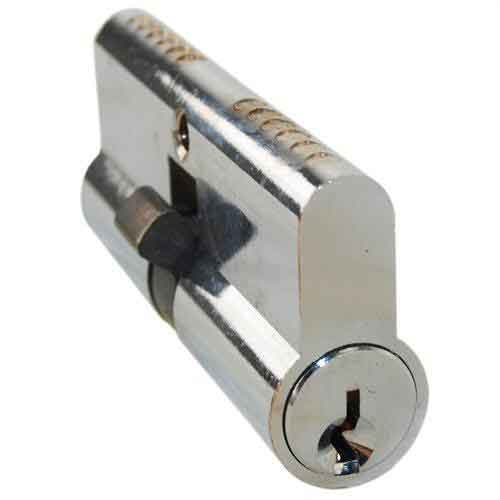
The pin cylinder locking mechanism is probably the oldest of locking mechanisms. The principle is simple. There’s a central core or ‘plug’ that needs to rotate to open the lock. The plug is prevented from turning by a series of pins, which obstruct the plug. The series of pins are in pairs. The top, or ‘driver pin’, and the bottom, or ‘key pin’. When the correct key is inserted, the split between the pairs of driver pins and key pins lines up along the edge of the plug where it meets the housing of the lock. This is called the ‘shear line’. Once this has happened, it allows the plug to turn and the lock is open. For lock pickers, we need to get the split in the pin pairs, or ‘stacks’ to line up along the shear line, get the plug to turn or rotate, and open the lock.

Since pin cylinders are the most popular locks, as we lock our front doors with them after all, there’s a wealth of tools and techniques we can use to pick them non-destructively without using the key.
-
Single Pin Picking
- Raking
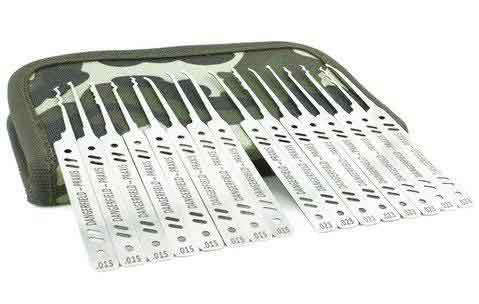
A modern set of lock picks for pin cylinder locks
Top or Bottom Keyway for Tension Wrench?
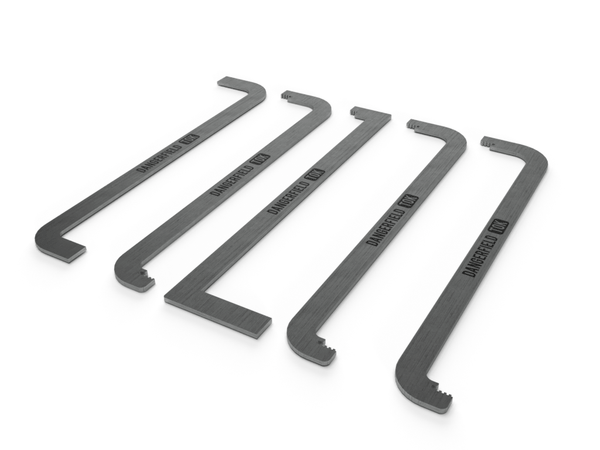
Lever locks are usually the next progression for lock pickers due to their popularity and the challenge they provide. After pin cylinders, lever locks are the most widely used locks.

The basic principle uses a series of levers which have cut-aways or ‘gates’ which need to be lifted to different heights to allow the bolt stump to move, and then unlock the door. When you insert the key and turn it, the different height cuts on the key will lift all the levers to the correct height, which aligns perfectly to provide a gap through which the bolt stump can move. One of the cuts on the key, the last one, is the bolt thrower, and as the key is turned, and the levers are raised, the bolt thrower simultaneously moves the bolt, and since the gates are correctly aligned, the bolt and stump can freely move, retracting into the housing and opening the lock.
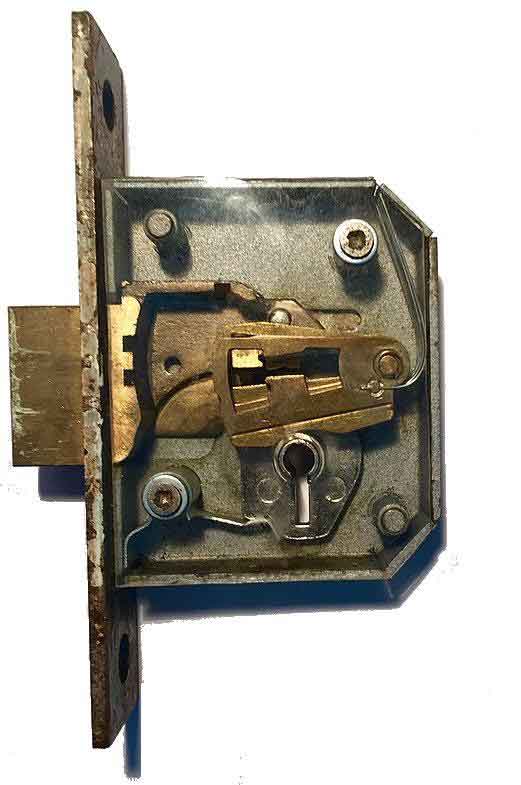
Inside of a Mortice Lever Lock
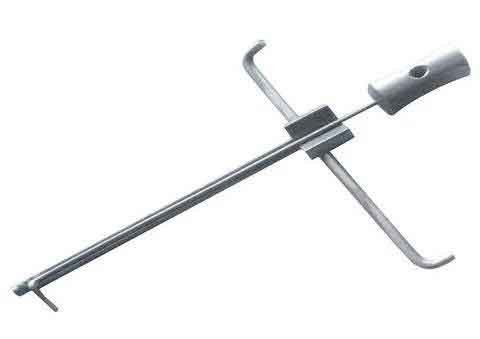
RB Locktools Curtain Lock Pick
-
Multi Gauge Curtain Lock Pick
-
2 in 1 Lever lock pick
-
Chubb Battleship Pick
-
Chubb Cruiser Pick
-
ERA Big 6 Pick
- ERA Insurance Pick
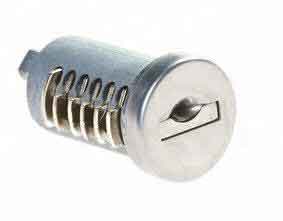
A wafer lock typically found in a locker with the wafers protruding
-
Lock Jigglers
-
Wafer Rakes
-
Lishi Car Lock Picks
- Inner Groove Rakes
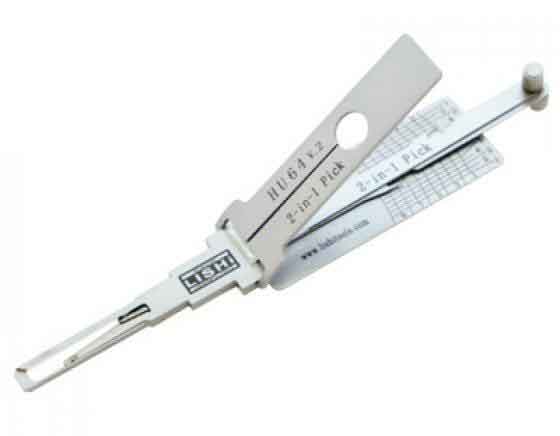
Lishi pick for vehicle wafer locks
WARDED LOCKS
Although having been around since ancient Rome, warded locks are not widely used today. Most often, they’re used on historic properties and items, with the intention of maintaining the ‘old’ aesthetic. The reason for their scarcity is the lack of security they provide. A warded lock houses a very simple turning mechanism, that requires a key to turn. However, they are vulnerable to a relatively simple attack because they’re not actually locked, so to speak, and if you can get to the back of the lock, you can turn the mechanism and unlock it.
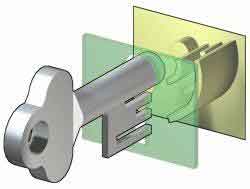
To make this clear we can talk about the original ‘skeleton key’. While many other and newer tools have been called ‘skeleton keys’, the original was made for warded locks. The name comes from the way the key was stripped of its blade, leaving just a turning tool - the key is reduced to its ‘bare bones’.
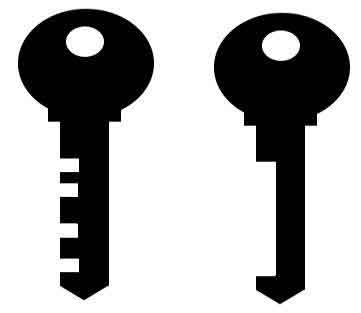
Left: Warded key. Right: Warded Skeleton Key
- Warded Lock Picks
Disc detainer locks use slotted rotating detainer discs. The correct key rotates these discs much like the tumblers you’ll see in high security safes, until all the slots are aligned, allowing a sidebar to drop into the slots and the lock is open.
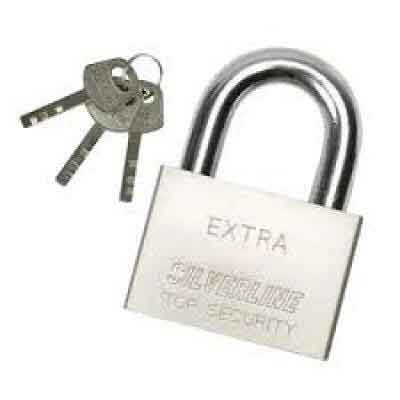
Standard disc detainer lock
-
Disc Detainer Pick (for copies)
-
Disc Detainer Pick (for High Quality locks)
-
How to identify locking mechanisms in today’s most commonly used locks
-
How to pick a lock (by mechanism or properties)
-
How to pick pin cylinder locks
-
How to pick high-security or less common locks
-
What lock pick set to use for a particular type
-
How to create a ledge, position pins or wafers on the shear line
-
How to apply tension or pressure using the tension wrench
-
What other lock picking tools to use, like an improvised or specially designed pick or tension wrench

 Like Us on Facebook to enjoy 5% discount
Like Us on Facebook to enjoy 5% discount